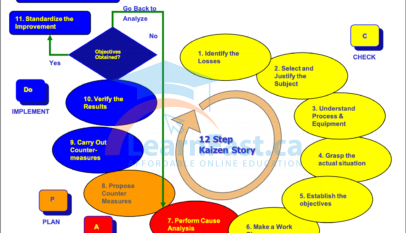In today’s rapidly evolving business landscape, organizations must be proactive and adaptive to stay ahead of the curve. A well-structured strategic planning process is a roadmap for achieving long-term success, enabling businesses to navigate challenges, capitalize on opportunities, and maintain a competitive edge. This comprehensive 10-step approach ensures that every aspect of an organization’s strategic planning is carefully considered, from establishing a vision and mission to monitoring progress and making necessary adjustments. By embracing this strategic planning process, businesses can build a strong foundation for sustainable growth and continuous improvement, ultimately unlocking their full potential.
SWOT analysis is a strategic planning tool that helps organizations identify their strengths, weaknesses, opportunities, and threats. It is a simple but effective way to evaluate a company’s current situation and identify the internal and external factors that may impact its success.
To conduct a SWOT analysis, you first need to identify your organization’s strengths, which are the internal factors that give you an advantage over your competitors. These could include a strong brand, a highly skilled workforce, or a unique product or service.
Next, you must identify your organization’s weaknesses and internal factors that may hold you back or make you vulnerable to competitors. These could include a lack of financial resources, a weak marketing strategy, or a lack of innovation.
Then, you need to identify the opportunities available to your organization, which are external factors that may help you grow and succeed. These could include new market trends, changing customer needs, or technological advancements.
Finally, you need to identify the threats your organization faces, and external factors that may pose a risk or challenge to your success. These could include things like competition, regulatory changes, or economic conditions.
Once you have identified all these factors, you can use the SWOT analysis to develop strategies that take advantage of your strengths, address your weaknesses, capitalize on opportunities, and mitigate threats. This can help you make better business decisions and achieve your goals.
- Define your business: Start by clearly defining what your business does, its target market, and its unique value proposition.
- Set goals and objectives: Identify your short-term and long-term goals and the specific objectives to help you achieve them.
- Conduct a SWOT analysis: A SWOT analysis is a tool that helps you assess your business’s strengths, weaknesses, opportunities, and threats. It will help you identify areas of your business that need improvement and opportunities for growth.
- Develop a strategic plan: Based on your goals, objectives, and SWOT analysis, develop a strategic plan that outlines the actions you need to take to achieve your goals.
- Identify key performance indicators (KPIs): Determine the key metrics you will use to measure your progress toward achieving your goals.
- Allocate resources: Determine the resources you need to execute your strategic plan, including financial, human, and technological resources.
- Implement the plan: Put your plan into action by taking the necessary steps to achieve your goals.
- Monitor and review progress: Regularly review your progress towards achieving your goals and adjust as needed.
- Evaluate and adjust: Once you have reached your goals, take the time to evaluate your strategic plan and make any necessary adjustments.
- Communicate and engage: Communicate your strategic plan effectively to all stakeholders and engage with them throughout the process.
Summary: This article outlines a 10-step strategic planning process to help organizations achieve long-term success. The process includes establishing a vision and mission, conducting a SWOT analysis, setting objectives, developing strategies, formulating action plans, implementing changes, monitoring progress, and making necessary adjustments. By following these steps, businesses can create a strong foundation for growth and continuous improvement.

















